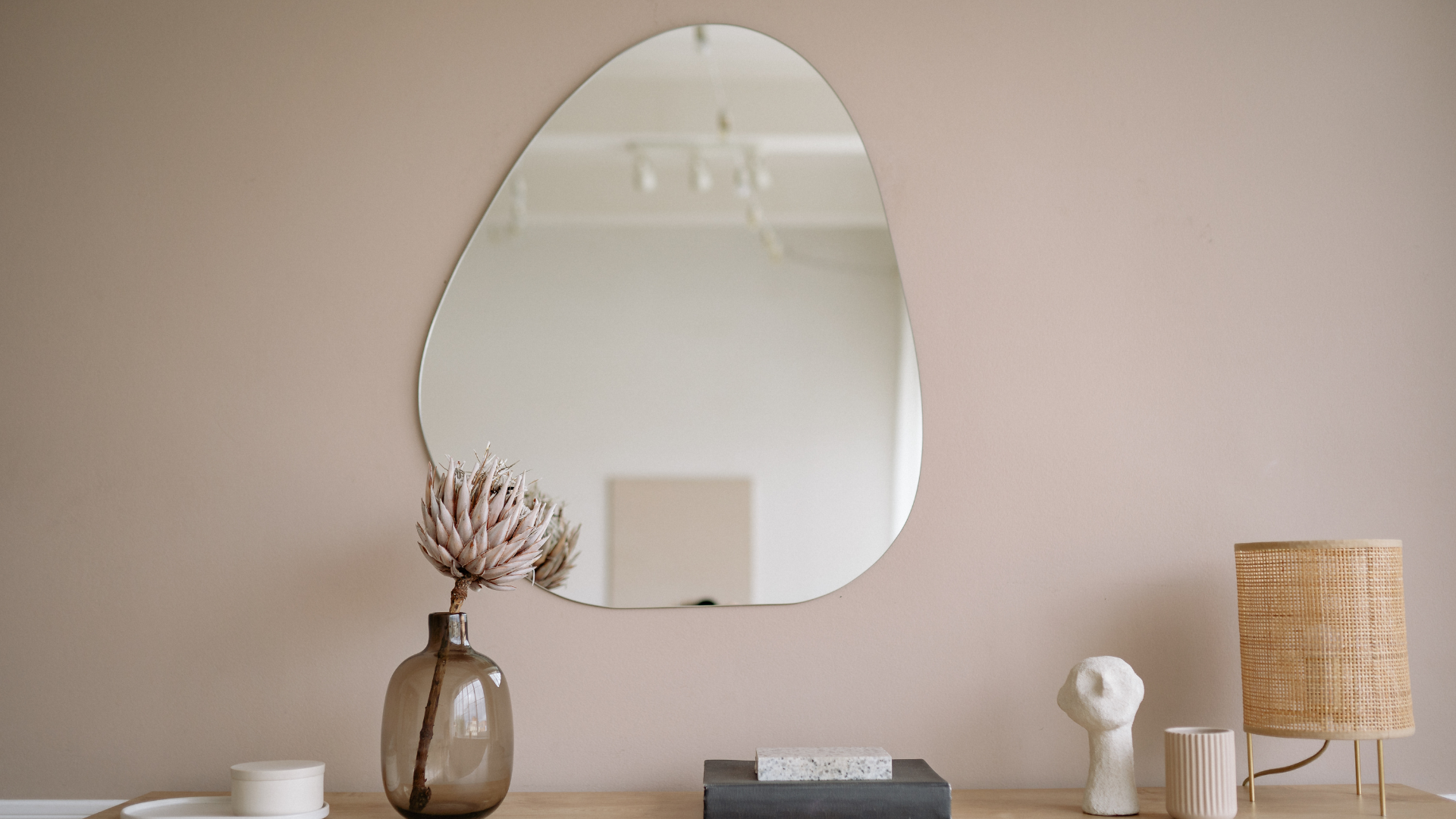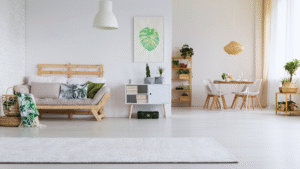Mirrors are powerful tools in interior design that can transform spaces in various ways. They can create an illusion of depth, enhance natural light, and serve as striking focal points in a room. By strategically placing mirrors, one can maximize the aesthetics of a space and make it feel larger and more inviting.
Incorporating mirrors involves understanding size, shape, and placement. Large mirrors can open up a small room, while decorative mirrors add personality and style. Positioning mirrors opposite windows or light sources amplifies brightness, making interiors feel airy and vibrant.
Choosing the right mirror is also crucial. From ornate frames to minimalist designs, the mirror should complement the existing décor. Utilizing mirrors effectively allows for creative expression and can significantly enhance the overall ambiance of any interior.
Fundamental Principles of Using Mirrors in Interior Design
Mirrors can transform spaces by amplifying light, creating depth, and enhancing the overall ambiance. Understanding their fundamental applications can lead to more effective interior design decisions.
Maximizing Natural Light
Placing mirrors strategically can significantly increase the flow of natural light in a room. A mirror opposite a window reflects sunlight, brightening the space.
Key considerations:
- Select large mirrors for bigger impacts.
- Use multiple smaller mirrors to create a dynamic look.
In darker areas, mirrors can act as light amplifiers. When light bounces off these surfaces, it can illuminate even the dimmest corners, making the space feel more inviting.
Creating the Illusion of Space
Mirrors can visually expand a room. By reflecting walls and furnishings, they create a sense of depth.
Effective strategies include:
- Utilizing floor-to-ceiling mirrors to elongate vertical space.
- Hanging mirrors in narrow hallways to make them appear wider.
In smaller rooms, this effect is crucial. It tricks the eye into perceiving a larger area, thus enhancing comfort and utility.
Enhancing Room Ambiance
Mirrors contribute to the atmosphere of a room. They can reflect artwork, enhance color schemes, and create focal points.
Tips for optimal arrangement:
- Position mirrors to reflect desirable views, adding interest.
- Frame mirrors to match the decor style, contributing to cohesion.
Choosing the right mirror style can influence mood. For example, antique mirrors may evoke nostalgia, while sleek, modern mirrors foster a contemporary vibe.
Strategic Mirror Placement Techniques
Careful placement of mirrors can significantly elevate the aesthetic appeal of a space. By identifying focal points, highlighting features, and balancing dimensions, mirrors can optimize how a room feels and appears.
Choosing Focal Points
When selecting where to place mirrors, identifying focal points in a room is crucial. A focal point can be a striking piece of art, a fireplace, or a beautiful window. Positioning a mirror opposite or adjacent to these elements enhances their visibility and impact.
Using larger mirrors draws attention to specific areas. Smaller mirrors can create a gallery effect, especially in group settings. Reflective surfaces amplify light, making the focal points stand out even more.
Highlighting Architectural Features
Mirrors can emphasize unique architectural elements within a room. For example, placing a mirror near a beautiful archway or molding can bring these details into focus. This approach adds depth and character to the design.
Consider using mirrors to frame doorways or windows. A well-placed mirror can make the entrance seem more inviting. It can also reflect natural light, creating a brighter and airier environment.
Balancing Room Dimensions
To create harmony in a space, mirrors can help balance dimensions. In narrower rooms, placing a mirror at the end can give the illusion of increased space. This trick visually expands the room, making it appear wider.
In larger rooms, mirrors can break up excessive wall space. Grouping multiple mirrors can fill large areas without overwhelming the design. Various shapes and sizes can complement furniture, adding cohesion to the overall look.
Selecting the Right Mirror Styles and Shapes
Choosing the appropriate mirror style and shape can significantly enhance the aesthetic of a space. Different designs cater to various interior themes and functional requirements.
Framed vs. Frameless Designs
Framed mirrors add a touch of elegance and can complement existing decor. They come in various materials such as wood, metal, or plastic. A detailed frame can serve as artwork itself, making it suitable for traditional or vintage styles.
Frameless mirrors offer a sleek and modern look, ideal for minimalist designs. Their clean lines contribute to an open feel in smaller rooms. When selecting frames, consider color and texture to ensure they harmonize with existing furnishings.
Round, Rectangular, and Unique Shapes
Rectangular mirrors are classic and versatile, often used above mantels or vanities. Their shape provides a good reflection area, making them practical for larger spaces. They suit various styles, from contemporary to rustic.
Round mirrors create a softer aesthetic and are perfect in areas where sharp angles dominate. They can break up the rigidity of a room and add a focal point. Unique shapes, such as starburst or geometric designs, can serve as statement pieces, reflecting individual style and creativity.
Custom and Statement Mirrors
Custom mirrors allow for personalization to fit specific dimensions and design preferences. This option suits those who have unique spaces or specific visions in mind. By choosing custom sizes and finishes, one can achieve a perfect fit for any room.
Statement mirrors are bold additions that draw attention. These mirrors often feature intricate designs or oversized dimensions. They can serve as a centerpiece in a room, enhancing both style and depth. Selecting the right statement mirror can transform the visual impact of a space, making it more inviting.
Creative Ideas for Incorporating Mirrors into Decor
Incorporating mirrors into interior design can elevate the aesthetic of a space. Creative placements and styles can add depth, brightness, and character to any room.
Mirrored Furniture and Surfaces
Using mirrored furniture creates an illusion of spaciousness. For instance, a mirrored coffee table can reflect light and expand a small living area visually.
- Mirrored Dressers: Ideal for bedrooms, they blend functionality with elegance. The reflective surface adds luxury while making the room appear larger.
- Accent Tables: These can serve as focal points in hallways or living rooms. When paired with unique decor items, they enhance the overall theme.
For a polished look, choose furniture with intricate designs. This can draw attention while maintaining harmony in the space.
Gallery Walls with Mirrors
A gallery wall featuring mirrors can serve as a striking visual display. This setup can combine various sizes and shapes of mirrors with artwork, creating a dynamic effect.
- Asymmetrical Arrangements: Mixing different styles of mirrors can add interest. Use round, square, and rectangular shapes for a contemporary touch.
- Themed Groupings: Choose mirrors with similar frames or finishes to create cohesion. This can enhance specific design themes, such as rustic or modern.
Incorporating mirrors with artwork can also play with light and shadow, elevating the overall decor.
Using Mirrors in Unexpected Spaces
Mirrors can transform unexpected areas. For example, placing a large mirror in a hallway can amplify natural light.
- Bathrooms: A wall-mounted mirror can serve as both a practical element and a design feature. Use frameless mirrors for a sleek look.
- Above Furniture: Positioning mirrors above sideboards or consoles can draw the eye upward, making the space feel taller.
These strategic placements allow mirrors to serve dual purposes, enhancing both functionality and visual appeal.




